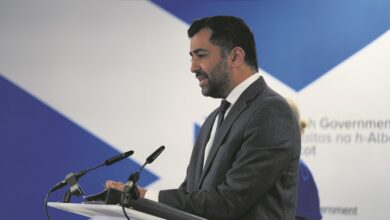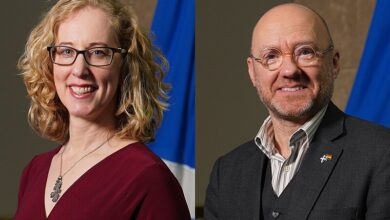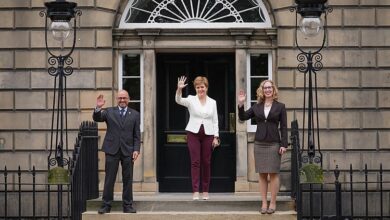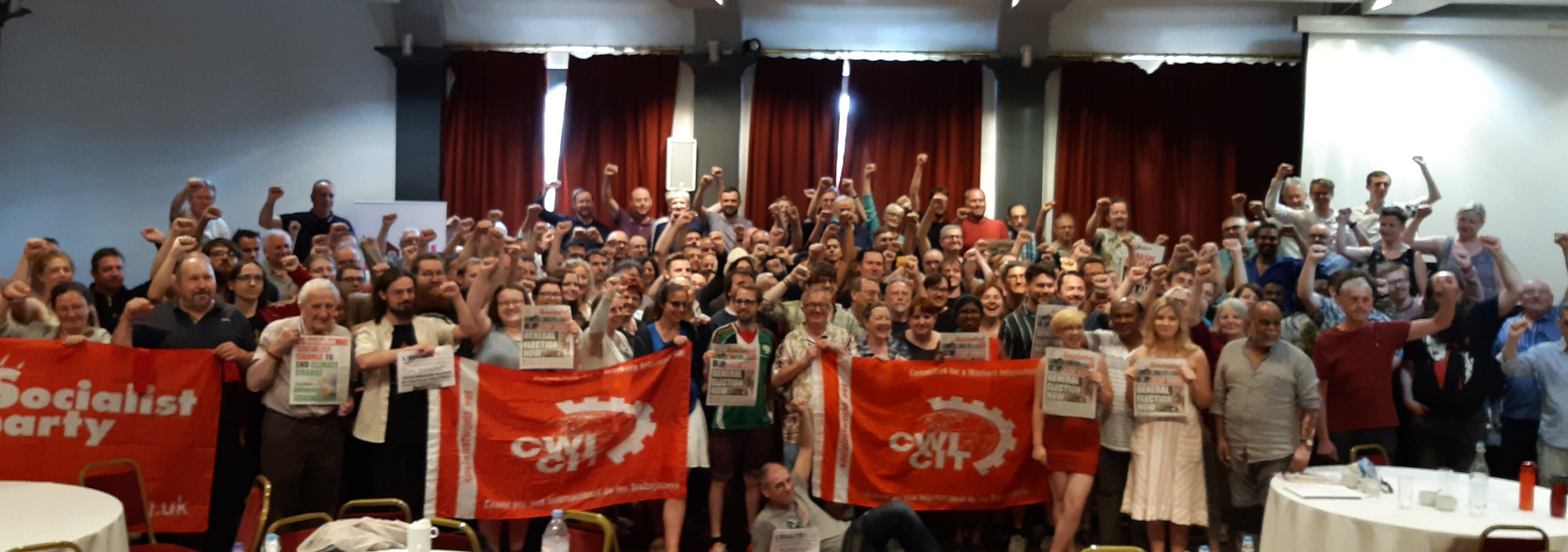Scottish TUSC campaign exposes cuts-making politicians
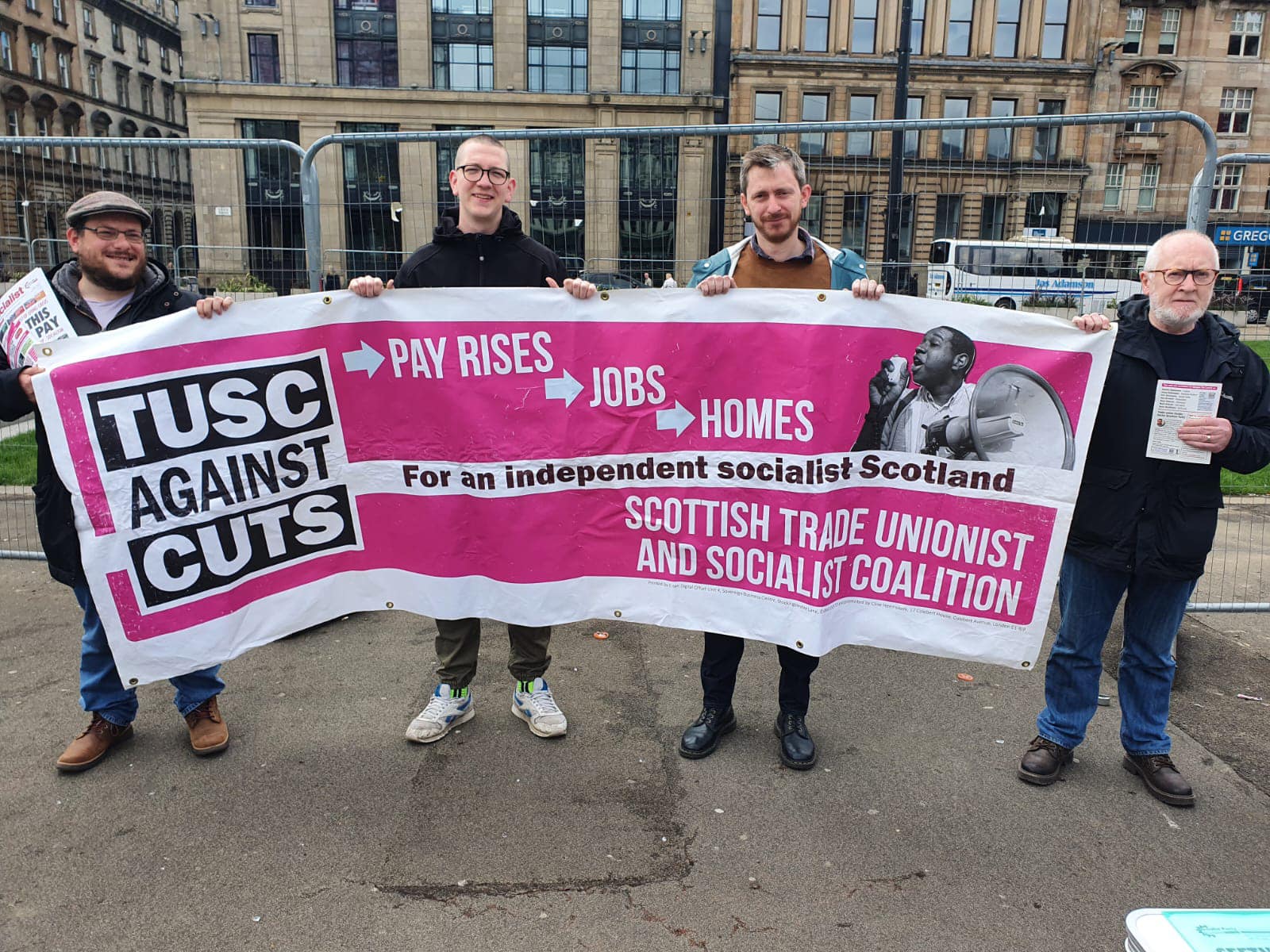
Socialist Party Scotland reporters
The Scottish council election results saw the Tories suffer major losses – almost a quarter of their councillors were wiped out – as their share of the first preference vote fell to 20%. Since 2007 the Single Transferable Vote system for local government elections has been used in Scotland.
Despite the huge class anger over the cost of living crisis and Boris Johnson, neither Labour nor the SNP made significant gains. Turnout was also down, at just 43%.
Labour fails to recover
Scottish Labour – now led by the pro-capitalist right under Anas Sarwar, dubbed the millionaire tendency – gained only 20 seats and ended up with a vote share of just 21.8%, marginally ahead of the Tories. Labour now have 282 councillors to the Tories 216.
Prior to the independence referendum of 2014 Labour was polling over 30% in council elections. The anaemic improvement in this election was more down to the drop in the Tory vote rather than any enthusiasm for Labour. The Lib Dems also made some gains as a result of the Tory collapse.
There are therefore no indications that Labour is recovering its electoral support among the working class. As elections analyst John Curtice pointed out in relation to West Dunbartonshire – the one council where Labour won a majority: “the increase in the party’s support was greater in middle-class wards than in working-class areas that were once its heartland.”
Despite gaining West Dunbartonshire, Labour are no longer the biggest party in North Lanarkshire or North Ayrshire. In both these cases they were the ruling administrations prior to the election.
Sections of the left in Scotland lauded North Ayrshire’s Labour council and its “Community Wealth building” which saw social housing built and the council using its powers for some progressive policies overall. But Labour still implemented cuts and council tax rises and did not implement a policy of fighting for no cuts/needs budgets.
Even in Glasgow where Labour came within a council seat of defeating the SNP, they were more than 11% behind in first preference votes.
The damage done by years of Blairite domination of Scottish Labour, cuts-making councillors and the 2014 independence referendum when Labour united with the Tories to oppose independence has left the party as a toxic brand among huge numbers of working class communities.
SNP alienate workers
Despite winning the largest number of council seats, 453, the SNP are increasingly alienating their working-class base, particularity where they have been the ruling administration in councils.
For example SNP support fell by 5% in Glasgow – mainly going to another pro-independence party the Scottish Greens. Indeed the Green candidate topped the poll in the Langside ward of the SNP council leader Susan Aitken.
Glasgow’s SNP-led council has faced strike action by thousands of council workers in cleansing and over equal pay recently.
Their record of implementing Tory austerity continues to arouse the opposition of working-class communities. The SNP national share of the first preference vote was 34%, a significant drop when compared to the post-indyref general election in 2015 when they polled 50%.
The Scottish Greens doubled their number of councillors in Scotland to 35, including 10 in both Glasgow and Edinburgh where they could form coalitions with the SNP. Support for the Greens is most evident among sections of the middle class and some young people.
In part, the growing support for the Scottish Greens also reflects a section of pro-independence voters looking for an alternative. But the Greens, who have a record of passing on cuts and supporting pro-capitalist policies, and the SNP are already in a governing coalition at Holyrood.
Therefore any SNP/Green council administrations will, from day one, be coalitions of cuts.
Once again, as was the case in the Scottish parliament election in 2021, the national question was a major factor in voting patterns.
Pro-independence parties polled around 44% (mainly SNP, Scottish Greens and Alba), while the Labour, Tory and Lib Dem share was just over 50%.
The Tories ran an overt anti-indyref2 campaign as did, to a lesser extent, the other pro-union parties. Mirroring this, the SNP continue to use the desire for self-determination and independence among many workers and young people to shore up their vote while refusing to mobilise a mass campaign for the right to self-determination.
SNP first minister Nicola Sturgeon has pledged to bring forward a plan for a second referendum, to be held in 2023. 55% currently support indyref2 being held in the next five years. Polling on independence is still around 50/50 for and against.
With Sinn Fein becoming the largest party in the Northern Ireland assembly for the first time, and currently leading opinion polls in the Republic of Ireland, demands by nationalists for a border poll on a possible United Ireland – opposed by the Unionist parties and a big majority of the Protestant working class – will also be a major destabilising issue for British capitalism.
The low turnout – with almost six in ten not voting, rising to two thirds in many working class areas – reflects the enormous dissatisfaction with the SNP leadership and the other pro-capitalist political parties in Scotland.
None of them offer any solutions to the catastrophic impact of soaring living costs and continued cuts to services.
Scottish TUSC campaign
For that reason the Scottish Trade Unionist and Socialist Coalition not only stood in this election but called on trade unionists and anti-austerity fighters to do the same.
Scottish TUSC stood 16 candidates across nine councils including seven in Glasgow, by far the largest number of socialist candidates in the election.
Our local campaigns distributed 35,000 leaflets during the election, making the case for no cuts/needs council budgets, pay and benefit rises to tackle rocketing inflation and public ownership of the profiteering energy companies.
We received an overwhelmingly enthusiastic response to these issues, but also evident was enormous anger towards the political parties who have failed to fight to defend the working class.
Dozens of street stalls were organised, we knocked on doors and engaged widely during the campaign. Our candidates took part in hustings debates with other parties and spoke at our own public meetings.
In addition, Scottish TUSC and Socialist Party Scotland activists supported protests by P&O workers and their unions at Cairnryan, brought solidarity to striking Scottish college lecturers and low paid UNISON staff on strike at Dundee University.
Our first preference votes, while modest, increased in the seven council wards we contested in Glasgow compared to 2017. We also stood for the first time in a council election in Inverness, Aberdeen, Paisley and Dumbarton.
Our high preference votes, those voters who gave Scottish TUSC candidates a 1st, 2nd or 3rd preference vote was also marked, indicating the support for a socialist policies to tackle the economic and social crisis facing working-class people.
The need to build a mass working class response to the deepening capitalist crisis is urgent.
Fighting trade unions organising coordinated strike action over the cost of living crisis is essential.
As is the building of a new mass working class party by the trade unions to build that fightback.
Socialist Party Scotland and Scottish TUSC will do all we can to drive forward that agenda and a socialist solution for the working class in the months ahead.
Scottish TUSC results
GLASGOW CITY
Ronnie Stevenson – Langside 153 (1.3%) 2nd 337 3rd 355 Total 1,2,3 (7.4%)
Jenny Robertson – Newlands/Auldburn 82 (1.1%) 2nd 136 3rd 270 Total 1,2,3 (6.4%)
Eric Stevenson – Greater Pollok 51 (0.6%) 2nd 87 3rd 260 Total 1,2,3 (4.4%)
Tom Ruddell – Pollokshields 88 (0.8%) 2nd 190, 3rd 251 Total 1,2,3 (5.1%)
Oisín Duncan – Dennistoun 84 (1.5%) 2nd 311 3rd 296 Total 1,2,3 (12.6%).
Matt Dobson – East Centre 63 (0.9%) 2nd 86 3rd 209 (5.1%)
Anne McAllister – North East 52 (1.1%) 2nd 65 3rd 248 Total 1,2,3 (8.1%)
Total 573 1st preference votes compared to 484 in 2017
DUNDEE CITY
Wayne Scott – Coldside 52 (0.9%) 2nd 127 3rd 217 Total 1,2,3 (7%)
Maddie Jamieson – Strathmartine 43 (0.7%) 2nd 177 3rd 188 Total 1,2,3 (6.9%)
HIGHLAND
Sean Robertson – Inverness Central 47 (1.4%) 2nd 88 3rd 92 Total 1,2,3 (6.9%)
NORTH AYRSHIRE
Ian Kerr – Irvine South 40 (1.2%) 2nd 79 3rd 302 Total 1,2,3 (12.5%)
EAST LOTHIAN
Jimmy Haddow – Tranent, Wallyford, Macmerry 57 (1%) 2nd 60 3rd 218 Total 1,2,3 (5.6%)
WEST DUNBARTONSHIRE
Lynda McEwan – Dumbarton 73 (1.1%) 2nd 105 3rd 473 Total 1,2,3 (9.9%)
ABERDEEN
Lucas Grant – Northfield/Mastrick North 38 (1%) 2nd 65 3rd 113 Total 1,2,3 (5.9%)
FIFE
Dave Edler – Dunfermline North 53 (0.9%) 2nd 158 3rd 229 Total 1,2,3 (7.7%)
RENFREWSHIRE
Jim Halfpenny – Paisley northwest 46 (1%) 2nd 66 3rd 126 Total 1,2,3 (4.9%)
